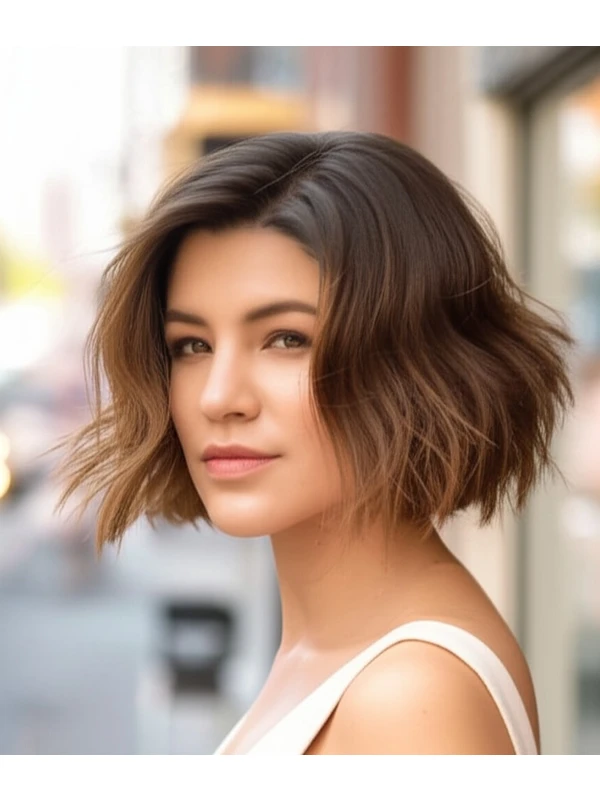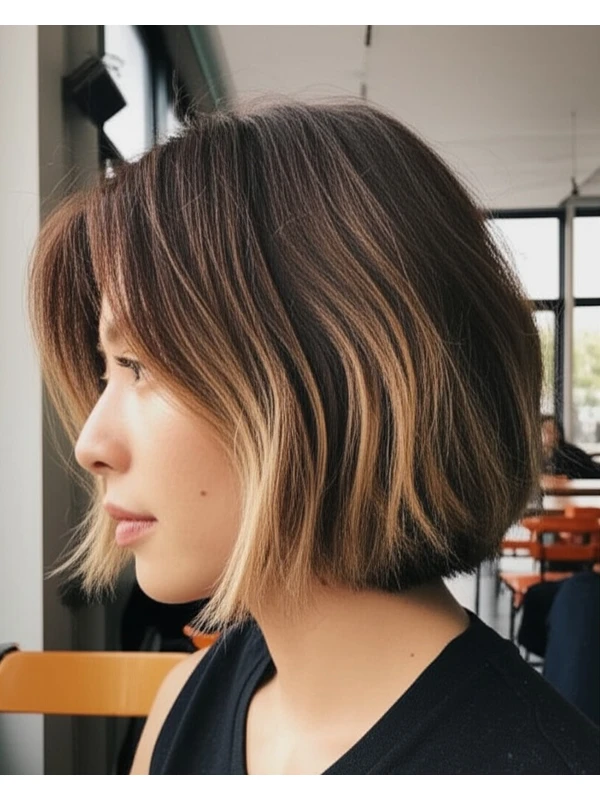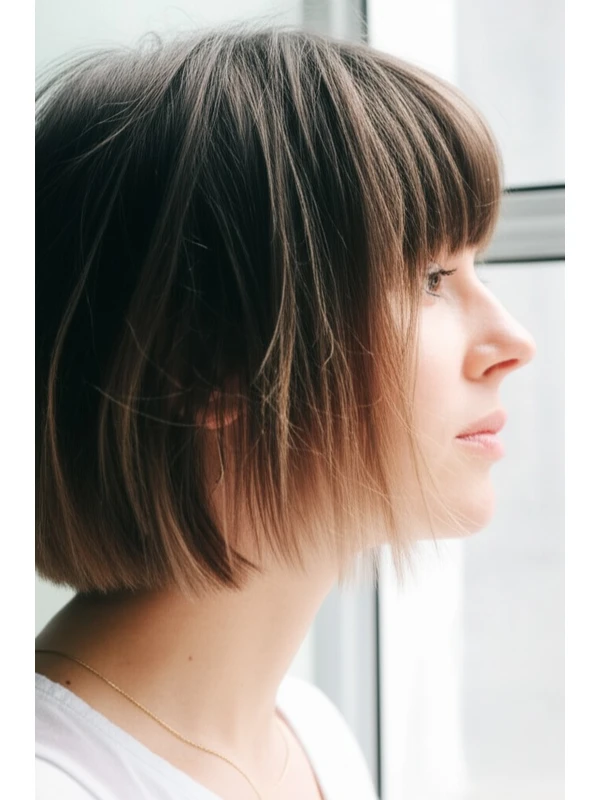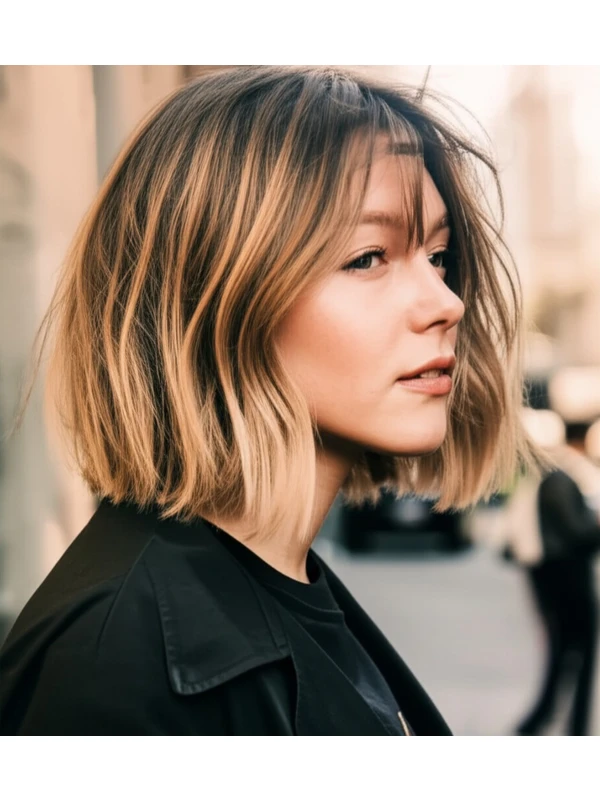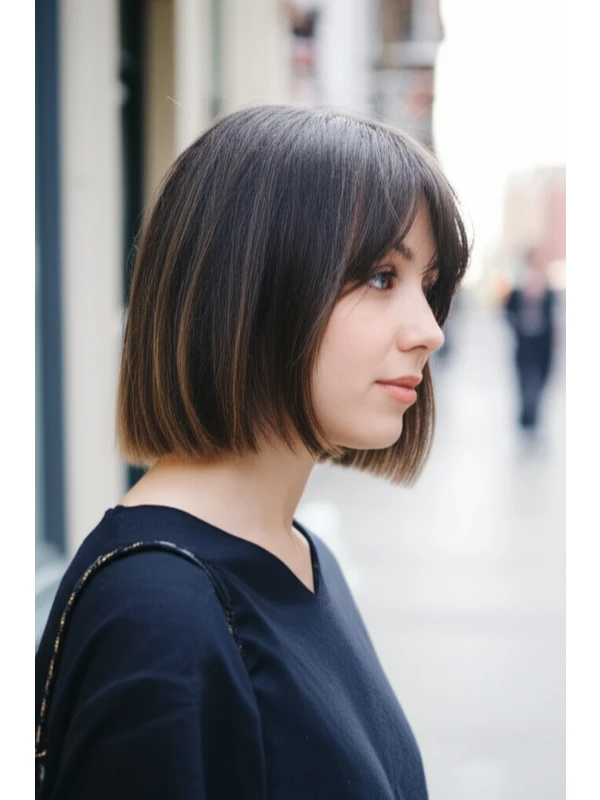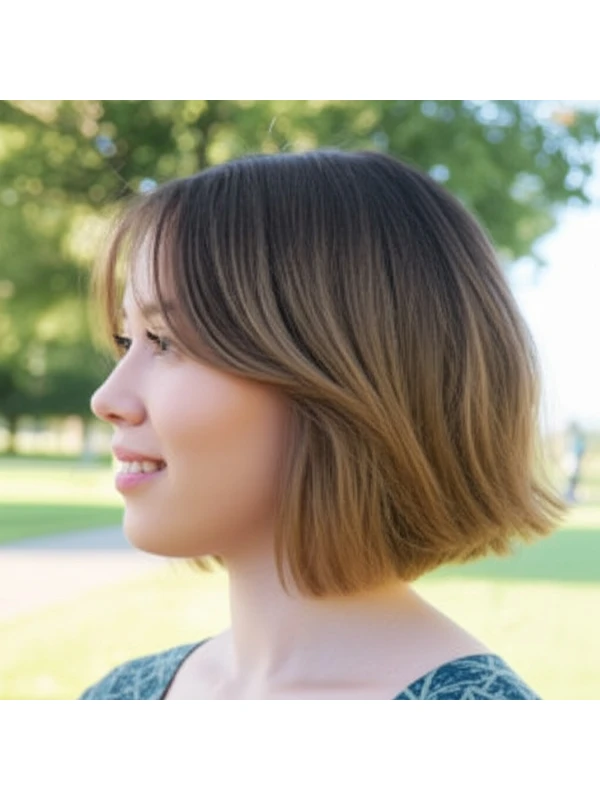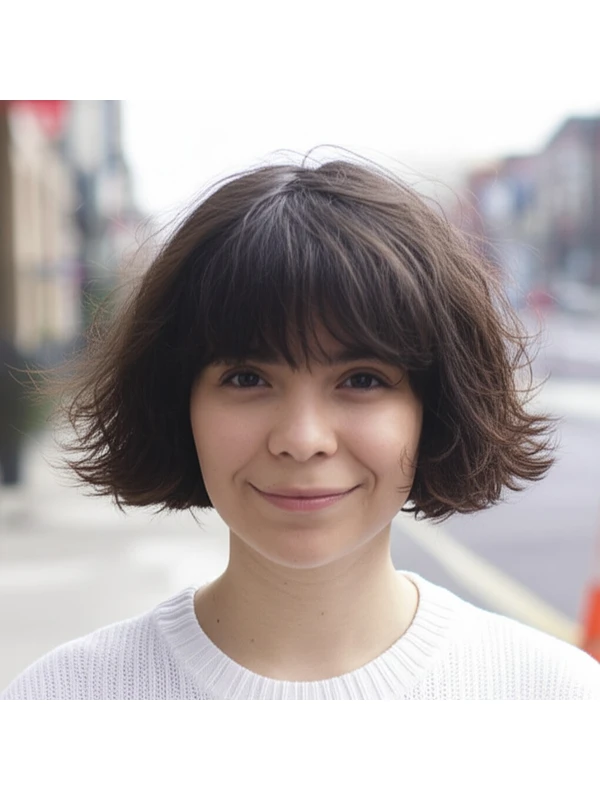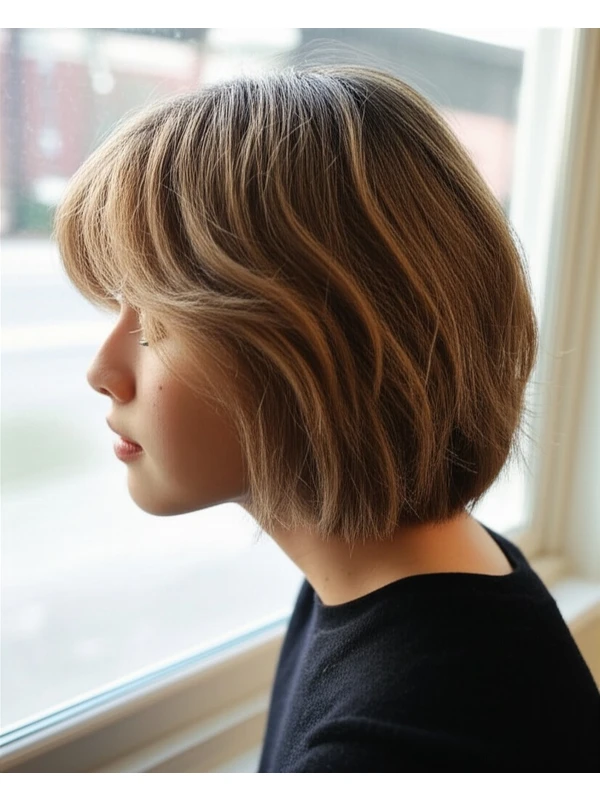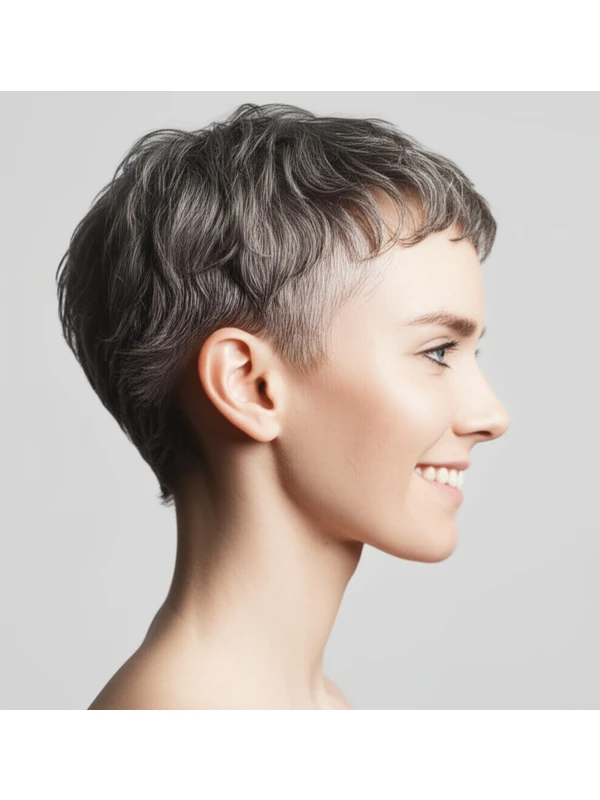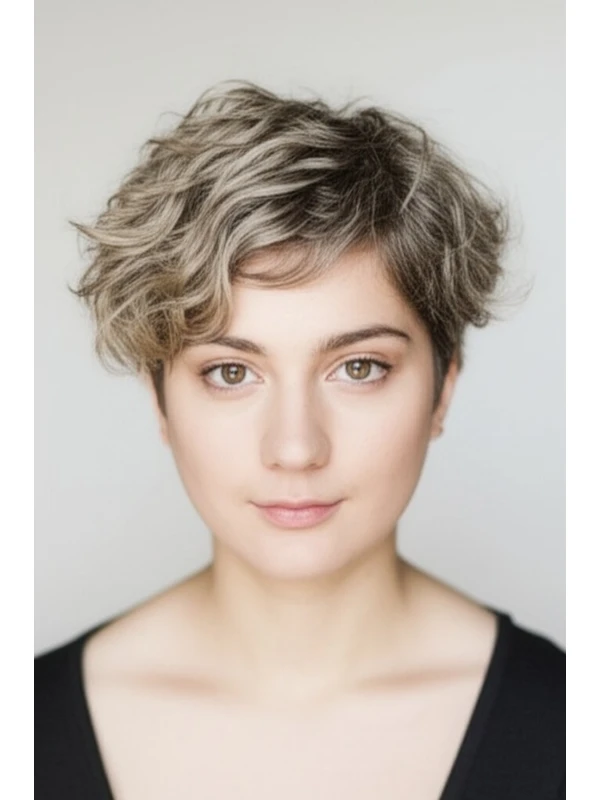#The Straight Cut: A Guide to Effortless Elegance
The straight cut is a timeless hairstyle celebrated for its simplicity and clean lines. It’s more than just “long hair without layers”; it's about precision, shape, and how the hair falls naturally. This guide will break down everything you need to know – from whether it suits your face shape to styling tips that will keep your look fresh.
#1. Background & Definition: What is a Straight Cut?
The straight cut prioritizes length and minimal layering. It’s designed to showcase the natural texture of the hair, creating a smooth, uninterrupted flow. Think Audrey Hepburn or Alexa Chung – those are classic examples!
- Cut Geometry: The key is evenness. Hair is typically cut with blunt lines at the ends, avoiding graduation (shorter layers blending into longer ones).
- Key Features: Clean lines, uniform length, minimal layering, focus on natural fall.
- Typical Length Ranges: Can range from just past the chin to shoulder-length or even longer. The shorter lengths require more commitment as they highlight any imperfections in hair growth and shape.
- Alternative Names: Blunt cut, one-length cut, blunt bob (if shorter).
#2. Face Shape Fit: Finding Your Perfect Angle
The straight cut can be incredibly flattering, but understanding how it interacts with your face is crucial. Here's a breakdown:
- Oval Faces: Lucky you! The straight cut looks fantastic on oval faces because the balanced proportions are already ideal for this style. A center part often works best.
- Fringe Options: Curtain bangs or a blunt, eyebrow-grazing fringe can add softness and interest.
- Round Faces: A longer straight cut (collarbone length or longer) is generally more flattering than a shorter one as it visually elongates the face. Avoid chin-length cuts which can emphasize roundness.
- Fringe Options: Side-swept bangs that angle towards the ear are your friend, creating asymmetry and slimming effect. Avoid blunt, straight-across fringes.
- Square Faces: Soften those angles! A slightly longer straight cut with a subtle face-framing element (a very slight taper near the cheekbones) can be beautiful.
- Fringe Options: Wispy, textured bangs that soften the forehead are ideal. Avoid blunt, harsh fringes which will accentuate angularity.
- Heart Faces: A straight cut balances a wider forehead and narrower chin. Shoulder-length or longer is often best to create balance.
- Fringe Options: Side-swept bangs or a soft, textured fringe can add balance and draw attention away from the widest part of your face.
- Diamond Faces: Similar to heart faces, a straight cut helps soften angles. A chin-length or slightly longer cut works well.
- Fringe Options: Curtain bangs are excellent for diamond shapes as they soften the cheekbones and highlight the eyes.
#3. Body Proportions & Height Guidance: Tailoring the Cut to You
Your height and body shape also influence how a straight cut will look.
- Petite (under 5'4"): A longer, shoulder-length or slightly longer style can help elongate your frame. Avoid cuts that end at the hips as they can overwhelm a smaller build.
- Average Height (5’4” – 5’9”): Most lengths work well! Experiment to find what you love.
- Tall (over 5'9"): Longer styles are naturally flattering, but consider how the cut moves when you walk and do activities. A slightly more textured straight cut can prevent it from looking too heavy.
- Narrow Shoulders: Add subtle face-framing layers or a slight volume boost at the crown to broaden shoulders visually.
- Broad Shoulders: Keep the hair relatively sleek and avoid adding excessive volume at the sides, which can emphasize shoulder width.
- Short Neck: Avoid chin-length cuts that can make your neck appear shorter; opt for longer styles that elongate the neckline.
- Long Neck: Shorter straight cuts (chin to collarbone) work well as they visually shorten the neck.
#4. Works Best With Hair Types & Densities: Finding Your Match
The success of a straight cut depends on your hair’s natural texture and density.
- Straight Hair: This is the ideal canvas! The cut will showcase its sleekness and shine best.
- Wavy Hair: A straight cut can work, but be prepared for some wave to show through. Discuss with your stylist how they'll account for this in the cut itself (e.g., a slight angle to allow waves to fall naturally).
- Curly/Coily Hair: While possible, it’s more challenging and requires significant skill from your stylist. The straight cut will likely stretch out curls/coils significantly. Be realistic about how much length you can retain while maintaining the desired shape.
- Shrinkage: Coily hair shrinks considerably when dry. Account for this – what looks like a long style in the salon might be much shorter once it's fully dried at home.
- Fine Hair: A straight cut can make fine hair look even thinner if not styled correctly. Consider a slightly longer length to create more visual volume.
- Medium/Thick Hair: This density is generally well-suited for the style, allowing for healthy fullness and movement.
- Density Tips: If your hair is very dense, ask your stylist to thin it out slightly, but maintaining the blunt lines of the cut.
#5. Styling Variations: From Sleek to Textured
The beauty of a straight cut lies in its versatility.
- Sleek vs. Textured: A sleek style uses heat and smoothing products for a polished look. A textured version embraces natural movement, often with minimal styling effort.
- Middle vs. Side Part: Middle parts create symmetry; side parts add softness and asymmetry.
- Fringe Variations: Blunt bangs, wispy bangs, curtain bangs – experiment to find what suits your face shape!
- Occasion Styling:
- Casual: Air-dried with a touch of leave-in conditioner.
- Office: Sleek and straight with heat styling tools.
- Evening: Add shine serum for extra glamour or create subtle waves with a curling iron.
#6. Maintenance: Keeping it Sharp
Regular trims are essential to maintain the clean lines of a straight cut.
- Trim Cadence: Every 6-8 weeks is typical, depending on how quickly your hair grows and how precise you want the shape to remain.
- At-Home Routine: Gentle shampooing and conditioning, followed by a leave-in conditioner or serum for moisture and shine.
- Heat vs. Air Dry: Minimize heat styling whenever possible to prevent damage. Air drying is preferable but may require more time and product to achieve the desired shape.
- Product Checklist: Shampoo & Conditioner (suited to your hair type), Leave-in conditioner, Smoothing serum or oil, Heat protectant (if using hot tools).
- Estimated Daily Styling Time: 5-30 minutes depending on the level of styling and texture.
#7. Grow-Out Roadmap: The Evolution of Your Style
A straight cut doesn't look the same at every length!
- Months 1-3: Maintains its initial shape, looking sharp and clean.
- Months 3-6: The ends may start to lose their bluntness slightly, requiring a trim to maintain the desired line. The style will naturally soften as it grows out.
- Maintaining Shape: Regular trims are key! Don't let those ends fray – that’s what makes the straight cut look less polished.
#8. Color Pairings: Enhancing Your Look
Color can dramatically enhance a straight cut.
- Shades That Elevate: Rich, glossy colors like chocolate brown, caramel highlights, or even a cool ash blonde can make the lines of the cut pop.
- Cool vs. Warm Undertones: Consider your skin's undertone when choosing color. Cool tones (ashy blondes, cooler browns) work well with cool skin; warm tones (golden blondes, warmer browns) complement warm skin.
- Low-Commitment Options: Gloss treatments or semi-permanent colors can add shine and dimension without a drastic change.
#9. Season & Occasion Guide: Adapting to the Moment
- Spring/Summer: Embrace lighter textures – air dry, use texturizing sprays for effortless volume.
- Fall/Winter: Sleek styles with added shine are perfect for more formal occasions and colder weather.
- Work: A polished, straight look conveys professionalism.
- Weddings/Parties: Add subtle waves or curls for a touch of glamour.
#10. Cost & Time: What to Expect at the Salon
- Salon Time: Typically 45-90 minutes depending on hair length and complexity.
- Estimated Price Range: Expect to pay moderately higher than basic cuts, but less than complex layered styles.
#11. Pros & Cons: Weighing Your Options
Pros: Timeless style, relatively easy to maintain (with regular trims), versatile for different occasions, showcases hair’s natural beauty. Cons: Requires commitment to regular trims, can highlight imperfections in hair growth and texture, may not be suitable for all curl patterns without significant alteration.
#12. Salon Consultation Script: Questions to Ask
Here are some prompts you can use during your salon consultation:
- "I'm interested in a straight cut. Can we discuss what length would best suit my face shape?"
- “How will this style work with my natural hair texture (wavy/curly)?”
- "Can you show me examples of different fringe options and how they’d look on my face?"
- "What products do you recommend for styling and maintaining this cut at home?"
- "I'm concerned about [specific concern, e.g., thinness, volume]. How can we address that with this style?”


